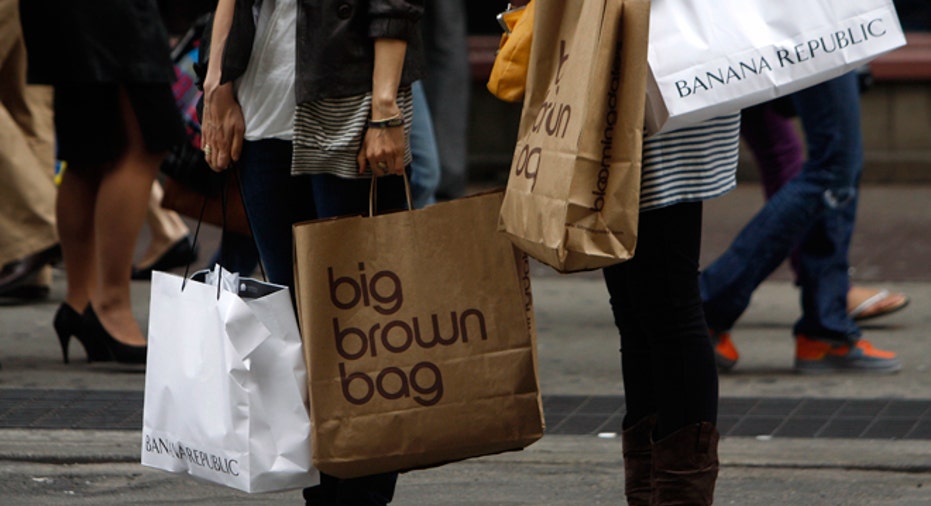Weak Consumer Spending, Trade Seen Hurting U.S. 1Q Growth

U.S. economic growth likely stalled in the first quarter as domestic demand cooled and a strong dollar continued to undercut exports, but a pick-up in activity is anticipated given a buoyant labor market.
Gross domestic product probably rose at a 0.7 percent annual rate after a 1.4 percent pace in the fourth quarter, according to a Reuters survey, also as businesses stepped up efforts to reduce unwanted merchandise clogging up their warehouses.
Growth was also likely dented by cheap oil, which has hurt the profits of oil field companies like Schlumberger <SLB.N> and Halliburton <HAL.N> and contributed to weak business spending. The Commerce Department will publish its advance first-quarter GDP growth estimate on Thursday at 8:30 a.m.(1230 GMT).
"I don't think it means the economy is in trouble," said Paul Ashworth chief U.S. economist at Capital Economics in Toronto. "Employment growth was incredibly strong in the quarter and forward-looking surveys have rebounded over the last months, suggesting the second quarter will be much stronger," said Paul Ashworth, chief U.S. economist at Capital Economics in Toronto.
The Federal Reserve, following a policy meeting that ended on Wednesday, acknowledged economic activity had "slowed," but also said labor market conditions had "improved further."
The U.S. central bank appeared to view the threats from the global economy and financial markets as having diminished. The Fed left its benchmark overnight interest rate unchanged and suggested it was in no hurry to tighten monetary policy further. It hiked rates in December for the first time in nearly a decade.
First-quarter GDP growth could, however, surprise on the upside after a report on Wednesday showed the goods trade deficit plunging to a one-year low in March as both exports and imports declined, a sign of weak domestic and global demand.
Economists also say the model used by the government to strip out seasonal patterns from data is not fully accomplishing its goal despite recent steps to address the problem.
Residual seasonality has plagued first-quarter GDP, with growth underperforming in five of the last six years since the recovery started in June 2009.
ECONOMY RESILIENT
"It will be tough to swallow such a low first-quarter GDP print, but thankfully we should be quickly reminded of the strength and resiliency of the U.S. economy when the April nonfarm payroll report is released next Friday," said Sam Bullard, a senior economist at Wells Fargo Securities in Charlotte, North Carolina.
Another month of strong job gains is expected in April, with applications for unemployment benefits near a 43-year low. Job growth averaged 209,000 jobs per month in the first quarter.
Consumer spending, which accounts for more than two-thirds of U.S. economic activity, is expected to have significantly decelerated from the fourth quarter's 2.4 percent rate.
Households have been frugal, cutting back on purchases of automobiles, despite cheap gasoline. Households appear to have socked away modest wage gains from the tightening labor market and the gasoline savings. They have also reduced their debt.
Higher savings and a lower debt load augur well for an acceleration in consumer spending.
Tepid consumer spending likely gave businesses more reason to place fewer orders for goods and ramp up efforts to reduce an inventory bloat. In the first quarter, businesses are forecast to have accumulated between $48 billion and $56 billion worth of inventory, down from $78.3 billion in the fourth quarter.
Economists estimate the small inventory build will cut about seven-tenths of a percentage point from first quarter GDP growth, up from the 0.22 percentage point drag in the fourth quarter.
Trade is expected to have subtracted four-tenths of a percentage point from GDP growth, with dollar strength weighing on exports. The dollar gained 20 percent versus the currencies of the United States' trading partners between June 2014 and December 2015.
So far this year the dollar is down 2.6 percent on a trade weighted basis, raising optimism for a rebound in exports.
A sustained plunge in energy sector investment probably put more pressure on business spending. Investment in software, equipment and nonresidential structures is expected have declined further in the first quarter.
Strong gains in residential investment are expected. Housing has been the bright spot in the economy.
(Reporting by Lucia Mutikani; Editing by Chizu Nomiyama)



















